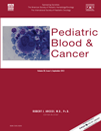SUV-measurements and patient-specific corrections in pediatric Hodgkin-lymphoma: Is there a benefit for PPV in early response assessment by FDG-PET?†
Conflict of interest: Nothing to declare.
Abstract
Background
To evaluate the influence of different SUV-measurements and patient-specific corrections thereof on the positive predictive value (PPV) of FDG-PET in pediatric Hodgkin lymphoma (pHL) using SUV-based response assessment.
Methods
PET-datasets of 33 children [female, n = 13, male, n = 20; range of age, 8.0–17.8 (mean, 15.0) years; follow-up, 44.5–83.3 (mean 63.0) months] with HL were analyzed retrospectively. PET-scans were obtained baseline (PET1) and after two cycles of chemotherapy (PET2). Within the leading lesion maximal SUV (SUVmax) and mean SUVs were generated by using isocontur-thresholds for different volumes of interest: Absolute, SUV2.5; relative to SUVmax, SUVmean40% to SUVmean70%. Generated SUVs were adjusted to body weight (SUV) and corrected for body surface area (SUV_BSA), patient's blood glucose and a combination thereof. The decrease in SUV or respective derivates thereof between PET1 and PET2 (ΔSUV) was assessed for response prediction using receiver operating characteristics (ROC)-analysis.
Results
Three patients had recurrence of disease. ROC-analysis showed the most accurate differentiation of responders and non-responders for ΔSUVmax_BSA [AUC, 0.97; P = 0.0026; sensitivity, 100%; specificity, 93.3%; PPV, 60.0%; negative predictive value (NPV), 100%; accuracy, 93.3%]. However, comparable results were obtained for conventional ΔSUVmax-determination (AUC, 0.96; P = 0.0112; sensitivity, 100%; specificity, 90.0%; PPV, 50.0%; NPV, 100%; accuracy, 90.9%). Threshold-based approaches were less effective or technically not performable in all patients.
Conclusions
At early response assessment by FDG-PET, patient-specific correction of ΔSUVmax by BSA improves PPV without impairment of excellent NPV in pHL. However, it is not statistically superior to simple ΔSUVmax-analyses. Larger cohorts are needed to investigate this observation. Pediatr Blood Cancer 2012;59:475–480. © 2011 Wiley Periodicals, Inc.




